#high modernism
Text
Brutalism and High Modernism in ANDOR's Production Design
So about a week ago I wrote about how the production design of Ferrix was clearly coming from a Bauhaus school of design, and I might have threatened to write about the use of Brutalism on Coruscant, and some of you fools have encouraged me. So you have only yourselves to blame for this.
I hope you're happy with yourselves.
First, the disclaimer: while I have taught AP Art History in the past, and am a nerd about architecture, I am mostly an autodidact about this stuff. My areas of expertise are in history, anthropology, political science, and education. So please understand that I am not specifically trained in this, and when (not if) I get something incorrect, I'm always open to friendly and helpful correction.
Now. ONWARDS TO CORUSCANT!
I will admit, friends, that I am very much Not A Prequels Person, and I haven't watched any of the animated Star Wars series, so I can offer no points of comparison between ANDOR's depiction of Coruscant and other SW media. I can only work off of Luke Hull's vision of the galactic capital, and-- damn, that is no bad thing.

We'll start with an aerial view from episode 7. As the camera soars over a portion of the endless city, we see the occasional building with strong geometric shapes-- such as the one on the above right-- that look like nothing so much as the Chrysler Building in New York City. I mean, look at those stacked triangular corner pieces and the metallic cladding on some of those curves! It's such a strong, unmistakable reference. Now, if you know your architecture, you'll be like, "But SomeInstant, this rant is supposed to be about Brutalism and High Modernism, and that's clearly an Art Deco reference!" AND YOU ARE CORRECT, MY FRIEND. Good eye!
Art Deco is an international style-- one of the first!-- that developed following World War I, reaching its height of influence in the late 1920s and early 1930s. It was associated with style, glamor, craftmanship, rich materials, and a sense of technology and progress. And it shares a common ancestor with Bauhaus designs-- they're both strongly influenced by the Vienna Secession movement. But while Bauhaus was about the accessibility and utility of design for the Common Man, Art Deco was fancy. The materials weren't your common brick or tile: it's chrome and ivory and inlaid tropical woods. Mon Mothma's apartment has some serious Art Deco references in it, if you want to look-- those pretty geometric white screen things between rooms? That's what I'm talking about.
So what we have here is a building that is speaking the same stylistic language as the buildings on Ferrix, but with a VERY different accent, and to a totally different audience. I would like to think that both the building we see here on Coruscant and, say, Maarva's home on Ferrix were built around the same time-- but the language of power and privilege and the physical reality of each are totally separate.
But what happens if we move lower? What if we stop just looking at the skyline, and adjust our gaze down a little?
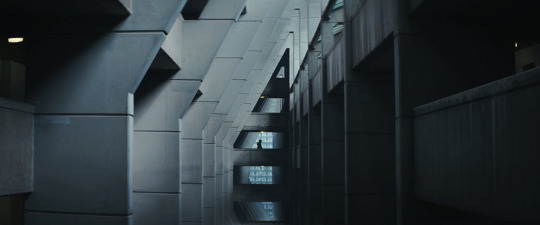
Now, this is Brutalism. (And also a killer shot, god damn.)
So. As an architectural and design form, Brutalism has its roots in post-World War II Britain, and is marked by a reliance on the plain, unadorned exposure of building materials such as concrete, steel beams, plate glass, exposed pipes, and bricks. In its emphasis on common materials, Brutalism is closely related to Bauhaus design. But Bauhaus uses more rounded shapes, and plaster or tilework to turn everyday materials into decoration. Brutalism foregoes that finish, however-- and it has a certain stark, clean appeal, especially when its done thoughtfully.

Brutalism is a style of design that is often associated with public constructions: mass transit, public housing, libraries, universities, government offices. If you've ever been to Washington D.C., the Metro is a great example of this-- that coffered cement curve of the ceiling? Pure Brutalism. And this is because Brutalism could be a form of design that was simple and cost effective. At its best, Brutalist designs offered simple, affordable housing, and could be constructed relatively quickly. Personally, I really dig a lot of Brutalist architecture-- it can be amazing!

But there are many, many criticisms of Brutalism as a design form: it can feel impersonal, cold, and flattening. It's very strongly associated with forced population movements: that is, the destruction of existing neighborhoods, and the mass relocation of people for convenience's sake. (That is, for the convenience of the state. We'll come back to this.) Take a look at Soviet-era apartment blocks, or the forcible relocation of the Inuit in Greenland in the 1950s-- the housing that was provided was typically Brutalist in its design. Thus, Brutalism has become historically associated with totalitarianism and the strong hand of the state, and the loss of individualism.

Another reason why some folks object to Brutalism as a form is the exposure of construction materials like concrete can mean that the surfaces can become stained and discolored, or wear unevenly in some climates. The broad, flat surfaces can become the target of graffiti-- I mean, if you have a problem with that, which I don't, because it can be amazing and the only difference between graffiti and public art is usually the zip code and price tag. Actually, a lot of very cool Brutalist buildings are beloved not because of their designs, but because of the fact that they're perfect for murals. Check out much of downtown Atlanta or Mexico DF (especially the campus of UNAM) for evidence of this.
But I haven't seen a single mural or tag on any of the shots of Coruscant thus far: it's just sterile, industrial concrete as far as the eye can see. That's state control for you.
So, anyway-- that's a Very Good Thematic Reason to use Brutalism as the main design influence on the lower echelons of Coruscant. If the Art Deco skyscrapers are coming from the same lineage as the Bauhaus design on Ferrix and speak to the Empire's surface-level ambitions, the Brutalist underpinnings of the galactic capital show its organizational power.
Which leads us to High Modernism.

High Modernism comes out of Brutalism, historically-speaking-- but as you might be able to guess, the materials used in its construction tend to be more polished than the unrefined, simple finishes of Brutalist architecture. No vast planes of concrete here: no, bring on the sheets of glass, the slabs of polished stone. There's still a strong geometric language at play, a lack of ornate decoration-- but there's a degree of sterility in High Modernism that isn't present in Brutalism.
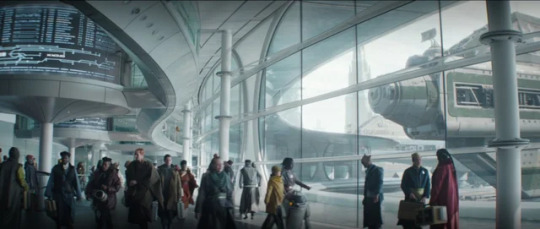
High Modernism is associated with the Cold War era of the late 1950s and 1960s-- and is therefore a DAMN good style choice for the ISB. My god. It's a design school that is all about technology and control: control over the environment, control over civic spaces, control over labor-- you name it.
The thing I associate with High Modernism above all else is the notion of state legibility: the idea that populations and spaces are organized into a structure that the state can read and therefore control. James C. Scott has a whole book about this, called Seeing Like a State. It's not my favorite of his works-- that would be Weapons of the Weak-- but his overriding thesis about how state policies of legibility are often destructive to culture and communities are worth coming back to. I mean, think about city and civil engineering, housing laws, city grids-- or Imperial sectors.
In our world, maybe the best example of High Modernism would be the work of Le Corbusier and his followers-- I mean, consider Brasilia! It's an artificially planned city, designed to reflect the aspirations of a growing nation: Ordem e Progresso, right? High Modernism tends to disregard historical realities, cultural practices, and the way people actually use spaces-- which, again, is exactly why Luke Hull is giving us this:
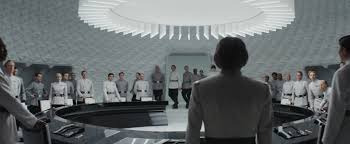
It's almost like these folks at ANDOR are good at their damn jobs, or something.
(Join me next time on SomeInstant Talks About Architecture in Andor: Wait, Is Niamos Space Acapulco, or What?)
#art and architecture#andor spoilers#andor#episode 4 spoilers#episode 7 spoilers#episode 6 spoilers#brutalism#art deco#high modernism#academic nonsense#sometimes i teach art history#production design#this is now a luke hull fanpage#star wars design#star wars#coruscant
188 notes
·
View notes
Link
But what a time to study architecture! This was the high modernism era: Walter Gropius, Frank Lloyd Wright, and Le Corbusier were rethinking everything. Breakthroughs in glass, steel, and concrete created new possibilities.
Le Corbusier, or Corbu as he was known, was a major influence for Yamasaki. Corbu was perhaps the most extreme of the high modernists. He had unyielding faith in the power of rationalism and efficiency to improve every facet of society. He believed homes should be “machines for living.” The master planner could create literal utopias by exerting his expert will from the top down.
The Housing Act’s provision of government-backed mortgage insurance meant suburban housing was cheap and getting cheaper. So were cars. President Eisenhower’s interstate highway project, which (arguably) began with the paving of I-70, connected St. Louis with the blossoming suburbs of St. Charles just across the river. Despite the decision in Brown v. Board, white families were taking that same FHA money that funded Pruitt-Igoe and buying homes in the suburbs, and many jobs went with them.
This fundamentally changed the city. De facto segregation soared; the city shrank and suburbs swelled. If St. Louis’ leaders realized their assumption of continued economic growth and population growth was wrong, they kept it to themselves.
It quickly got worse from there.
Planners expected the working poor to live in the complex. Instead, many unemployed families took the apartments, which meant—because families receiving welfare paid the lowest rents—the rent revenue wasn’t enough to sustain the building.
Also, under Missouri’s welfare laws at the time, you could receive welfare only as a single parent. This left many mothers and fathers with the grim options of staying together without the state benefits, or separating in order to receive benefits. Many fathers left their families to search for work wherever they could find it. They often didn’t return. Soon Pruitt-Igoe was mostly populated with large, single-parent families. The lack of fathers in the building (and social workers ran regular checks to ensure dad really wasn’t living there) had dangerous ripple effects for Pruitt-Igoe children. Crime quickly became common, and children joined gangs, vandalizing and damaging the buildings. Maintenance workers had trouble keeping up and occupancy dropped rapidly.
The day President Lyndon Johnson gave his famous “Great Society” speech in 1964, residency in the complex hovered around 25%.
And what of Yamasaki’s innovative skip-stop elevators? His wide hallways? Did they foster a sense of community as he intended? Amity Shlaes paints a bleak picture:
[The] elevators… were muggers’ traps. Poor maintenance meant the elevators often jammed, leaving gangs’ victims in with them for long extra minutes. The gangs lurked in the halls and made tenants “run the gantlet” to get to their doors.
Young men threw bricks and rocks at windows and street lamps; the activity was a regular sport. There were no good playgrounds. Because there were no toilets on the ground floor, children had accidents there, and the elevators gradually became public toilets. The community area was a sorry joke; its only function ultimately was as a place for collecting Housing Authority rents. No one seemed able to stop the decay.
ST. LOUIS QUICKLY realized that Pruitt-Igoe was a problem. But it was unclear who, if anyone, could fix it. The federal government, the St. Louis Housing Authority, the state, and the City of St. Louis itself all shared responsibility for the complex. When a problem belongs to everyone, it belongs to no one.
Within five years of its launch, Yamasaki was regularly apologizing for his role in the project. Though the final design of the complex differed from his original vision, he came to question the core assumption behind the project: that people’s lives could be effectively engineered through urban design. He expressed regret for his “deplorable mistakes” with Pruitt-Igoe. By the late 1950s, he was giving eloquent speeches about the “tragedy of housing thousands in exactly look alike cells,” which “certainly does not foster our ideals of human dignity and individualism.”
To the Detroit Free Press, he put it more simply: “Social ills can’t be cured by nice buildings.”
By the early 1970s, the 33 concrete tombstones lining St. Louis’ skyline were a cautionary tale for utopian housing schemes. It was a den of crime and misery, rather than anything anyone could call home. When the decision came to demolish the complex, occupancy was only 10 percent.
#there's even more detail in the article but this is just my favorite part#Joseph Kast#Minoru Yamasaki#architecture#1950s#St. Louis#housing projects#housing#urban blight#20th century#central planning#Le Corbusier#high modernism#Amity Shlaes#high rises#history#War on Poverty#welfare state#MO
3 notes
·
View notes
Text
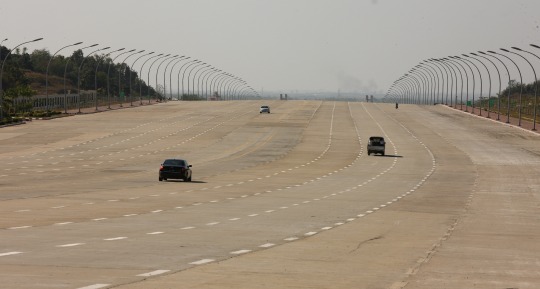
The barren highways of Naypyidaw.
Don't listen to the high modernists. You can't will cities into existence.
0 notes
Text

yuji got into a fight at school and uncle sukuna comes to pick him up ( jin is ranting about how yuji is being influenced by sukuna ) !!
uncle sukuna ! nephew yuji !
#cute#jujutsu kaisen#sukuna au#sukuna#sukuna fanart#uraume#jjk#jjk fanart#megumi fushiguro#uraume fanart#yuji itadori#yuji#yuji fanart#gojo satoru#uncle sukuna#sukuna uncle#nephew yuji#jin itadori#kaori#high school#young yuji#kid yuji#adult sukuna#modern sukuna
2K notes
·
View notes
Text


✦ Hound mode ✦
#meat! food for the pack! we're eating well tonight!#for context I mentioned earlier that in their setting normal four-legged dogs don't exist#which is a bummer since in canon timeline Vasco likes to hunt and in that era hunting usually involved a lot of hounds#and they just have to do without#own art#own characters#CanisAlbus#art#artists on tumblr#Machete#Vasco#anthro#sighthound#dogs#canine#animals#modern au#comics#typically sighthounds are also known for their high prey drive but I think Machete's reaction time and fitness leave a lot to be desired
6K notes
·
View notes
Text


🧼🤓
#soap tries to see (lol) what all the hype behind glasses is all about#then ends up getting a headache from how how high ghost's prescription is#ghostsoap#soapghost#ghoap#john soap mactavish#john mactavish#johnny soap mactavish#soap mactavish#soap cod#simon ghost riley#simon riley#ghost cod#call of duty#call of duty modern warfare#cod modern warfare#glasses4ghost and glasses4soap clashing for dominance#who will win#bressymbols
1K notes
·
View notes
Text


soap never touched a joint ever again
#art#fanart#cod fanart#call of duty modern warfare 2#cod mw2#ghostsoap#simon ghost riley#sketch#soapghost#john soap mactavish#just projecting#that man’s filter is GONE when he’s high
1K notes
·
View notes
Text

Really cannot emphasize enough the incredible degree to which no we wouldn't.
#ppl really just like#don't believe in the industrial revolution huh#vagueposting#my problematic fave is high modernism
2K notes
·
View notes
Text


first meeting and now
#one piece#monkey d luffy#trafalgar law#lulaw#my art#my comics#secret modern au#described in alt text#law needs to be 26 for themes reasons but also since it's a modern au and irl it doesn't feel like#your life is truly your own until you're out of high school i made the younger strawhats (and vivi) 2 years older#so they could have smth going on in their life. work wise ect!
3K notes
·
View notes
Text




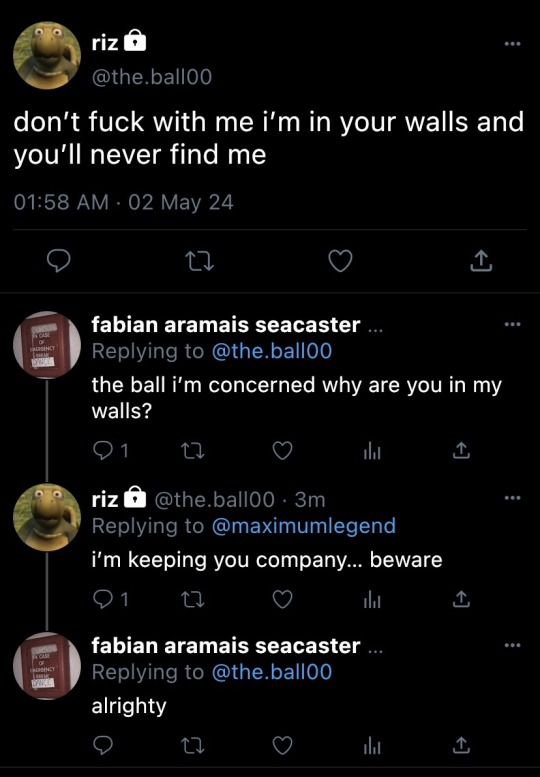

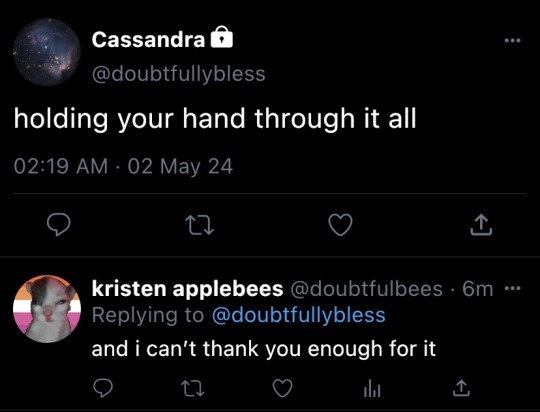

I just don’t stop do i (i will one day who knows) LETS GO BAD KIDS ☀️✨
#dimension 20#fantasy high#fhjy#fhjy spoilers#d20#adaine abernant#riz gukgak#gorgug thistlespring#figeroth faeth#fabian seacaster#kristen applebees#fantasy high junior year#d20 fhjy#d20 spoilers#mine: edit#modern au#my mind goes wild past midnight
670 notes
·
View notes
Text
i feel like modern aus with paldulcie tend to place them as a well adjusted happy couple but ya know what. they are not innocent from the dyke drama. they've got an inappropriate age gap. ten years of long-distance letter writing. an unrequited marriage proposal. where are the aus where they're in a fraught on again off again situationship. they're in love. they're not dating. they're everything to each other. its not a relationship. camilla is also there.
#eskildit posts tlt#the locked tomb#bad idea right by olivia rodrigo is just palamedes in a modern au#and before anyone says its not even an inappropriate age gap..... i graduated from high school when you were 11 etc etc#shout out to the line in tug where dulcie says she had to remind herself that pal was a child........ hm....
1K notes
·
View notes
Text

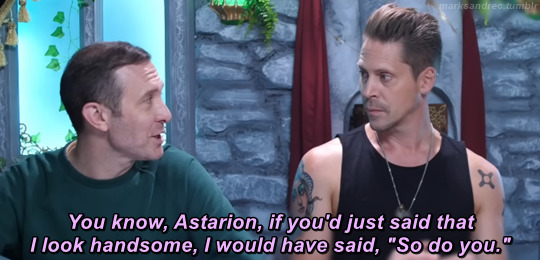

Marks and Rec: Misc #2617
I'm waiting for the patch to download so here's some bloodweave flirting. (Dialogue from Modern Family.)
#incorrect bg3 quotes#bloodweave#bg3#astarion#gale of waterdeep#gale dekarios#neil newbon#tim downie#incorrect quotes#marks and rec misc#source: modern family#high rollers dnd#dnd
2K notes
·
View notes
Text

destress time with a simon dood
#gonna go to bed early.. my stress levels r kinda high rn?? (i also have to wake up early again..... on a fucking saturday ewWW)#my art#2024#call of duty#call of duty: modern warfare#call of duty: modern warfare ii#call of duty: modern warfare iii#cod#cod mw#cod mwii#cod mwiii#modern warfare#mw#mw2#mw3#ghost cod#simon ghost riley#simon riley#ghost#art#fanart#digital art#digital drawing#sketch#doodle#video games#activision
937 notes
·
View notes
Text
I see way too many fics where Caitlyn is cool. Arcane Caitlyn has a conspiracy board on her floor, no friends we see of her age despite being one of the richest people in Piltover, and sucks at making conversation. This is loser erasure and I will not stand for it. In this essay I will—
#look let's be real#arcane caitlyn would not be cool in a modern setting either#especially not a high school one#she would be listening to true crime podcasts and failing at flirting with girls okay#arcane#caitlyn kiramman#caitvi#i want a fic where she goes to vi for charisma lessons#i will allow caitlyn to be cool when she's being a class traitor but that's like it
2K notes
·
View notes
Text

Save me punk Perona. Punk Perona save me. Please punk Perona sa
#this has been done for half a month it’s high time I finally post it#I should render it. but. I don’t wanna.#hehe#anyway#more Perona coming soon maybe?? soon-ish?? who knows.#one piece#one piece perona#perona#modern Perona#thriller bark#one piece fanart#one piece girls#art#artwork#my art#fanart#digital art#drawing
726 notes
·
View notes
Text
könig horse cock, its atleast gotta be 7 to 9 inches for it to bulge out of his pants like that



#könig x reader#mw2#call of duty#könig#konig#konig x reader#cod mw 2022#modern warfare#modern warfare 2#i want this man to manhandle me and fuck me silly#i wish austrians were real#smut#lets get high and fuck#let me ride you#lord have mercy
7K notes
·
View notes